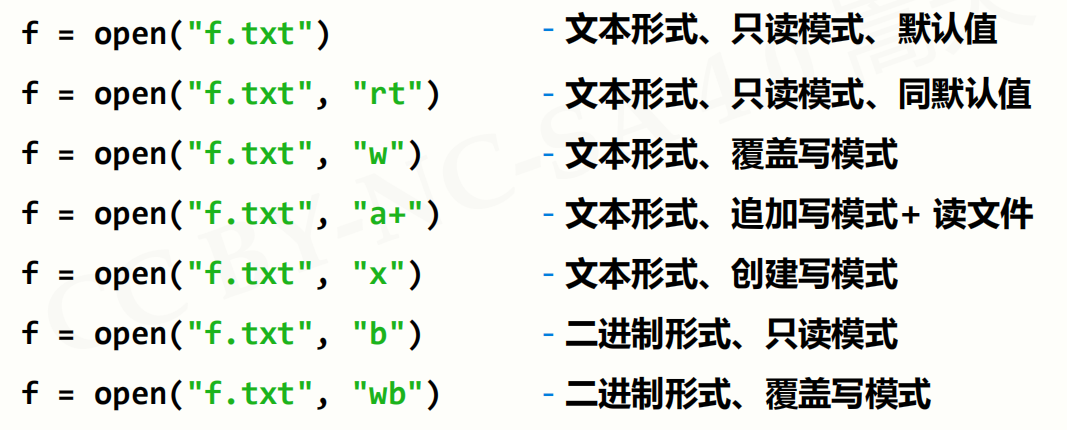您好,登錄后才能下訂單哦!
您好,登錄后才能下訂單哦!
這篇文章給大家分享的是有關python中文件操作有哪些的內容。小編覺得挺實用的,因此分享給大家做個參考,一起跟隨小編過來看看吧。
核心代碼
import numpy as np
import os,sys
#獲取當前文件夾,并根據文件名
def path(fileName):
p=sys.path[0]+'\\'+fileName
return p
#讀文件
def readFile(fileName):
f=open(path(fileName))
str=f.read()
f.close()
return str
#寫文件
def writeFile(fileName,str):
f=open(path(fileName),'w')
f.write(str)
f.close()
def str1():
str=','.join('我在中國大地上驕傲地生長著!')
return str
def str2():
return str(np.random.randint(-49,50,[3,3,3]))
#實驗1
def test_1():
fileName='中國大地.txt'
writeFile(fileName,str1())
list=readFile(fileName).split(',')
print(list)
#實驗2
def test_2():
writeFile('str1',str1())
writeFile('str2',str2())
str_1=readFile('str1')
str_2=readFile('str2')
print(str_1)
print(str_2)
test_2()下面是一些
打開和關閉示例:

讀取


寫入


randint(low[,high,shape]) 根據shape創建隨機整數或整數數組,范圍是[low, high)
numpy.random.randint的詳細用法
函數的作用是,返回一個隨機整型數,范圍從低(包括)到高(不包括),即[low, high)。如果沒有寫參數high的值,則返回[0,low)的值。
numpy.random.randint(low, high=None, size=None, dtype='l')
參數如下:
| 參數 | 描述 |
|---|---|
| low: int | 生成的數值最低要大于等于low。 (hign = None時,生成的數值要在[0, low)區間內) |
| high: int (可選) | 如果使用這個值,則生成的數值在[low, high)區間。 |
| size: int or tuple of ints(可選) | 輸出隨機數的尺寸,比如size=(m * n* k)則輸出同規模即m * n* k個隨機數。默認是None的,僅僅返回滿足要求的單一隨機數。 |
| dtype: dtype(可選): | 想要輸出的格式。如int64、int等等 |
輸出:
返回一個隨機數或隨機數數組
例子
>>> np.random.randint(2, size=10)
array([1, 0, 0, 0, 1, 1, 0, 0, 1, 0])
>>> np.random.randint(1, size=10)
array([0, 0, 0, 0, 0, 0, 0, 0, 0, 0])
>>> np.random.randint(5, size=(2, 4))
array([[4, 0, 2, 1],
[3, 2, 2, 0]])
>>>np.random.randint(2, high=10, size=(2,3))
array([[6, 8, 7],
[2, 5, 2]])
感謝各位的閱讀!關于“python中文件操作有哪些”這篇文章就分享到這里了,希望以上內容可以對大家有一定的幫助,讓大家可以學到更多知識,如果覺得文章不錯,可以把它分享出去讓更多的人看到吧!
免責聲明:本站發布的內容(圖片、視頻和文字)以原創、轉載和分享為主,文章觀點不代表本網站立場,如果涉及侵權請聯系站長郵箱:is@yisu.com進行舉報,并提供相關證據,一經查實,將立刻刪除涉嫌侵權內容。